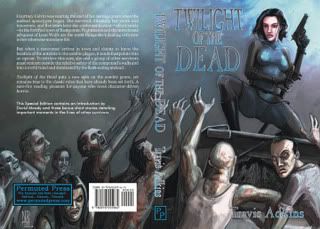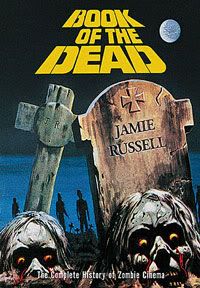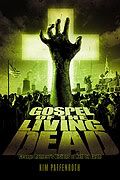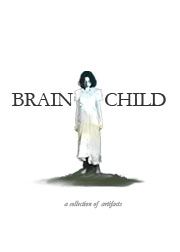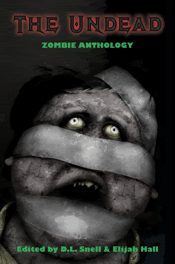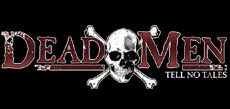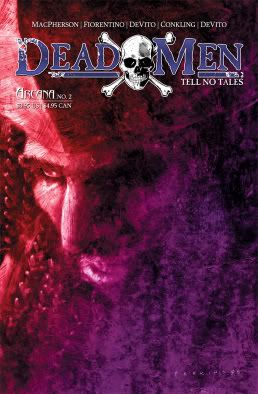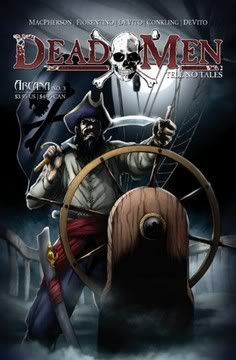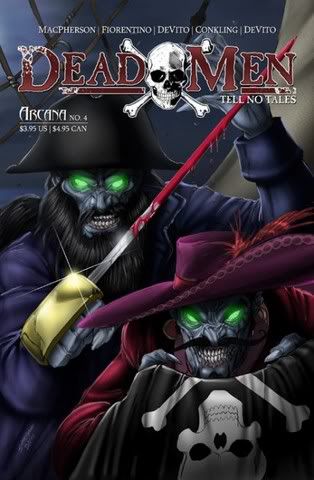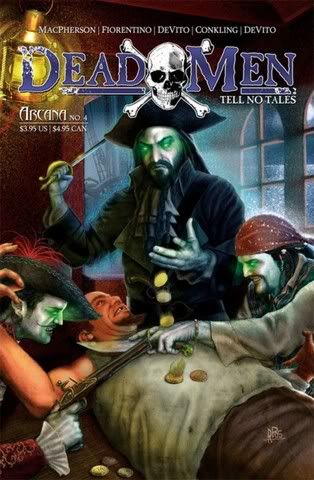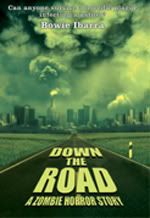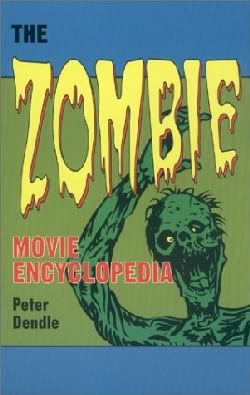Le SangrebySaranna DeWylde

Part I.
The sea air was a courtesan, practiced and soft as it slid into Saint Augustine with the scent of exotica and the lure of the unknown. There was a subtle malevolence that threaded through that sweetness, a hidden chill that fought through the cloying humidity of the afternoon.
Morning tide had brought the trader ship Reliant into port and with it, foreign goods. There were spices, silks, teas and flesh.
It was the flesh that caught the eye of young Martine Bartlett, the newly named master of Casa de la Sangre.
She was dirty, this slave, her exact ethnicity impossible to determine beneath all of the grime. Slender and young, obviously some gentleman’s by-blow, judging from the green of her eyes. Her hair fell in matted knots to her waist and a simple muslin shift did little to hide her body.
But it wasn’t her woman’s charms that caught his attention. It was the tattoo on her arm, though barely visible through the layers of filth, it was there nonetheless. A serpent’s tail began on her wrist and wrapped around her arm several times until the animal’s head came to rest on her collarbone.
There was something intriguing about her- the tattoo, made him want to touch her, to have her. He stepped forward and was about to inspect her further when a bulky form inserted itself between Martine and his intended purchase.
“That’s not one for a fine gentleman such as yourself.”
“No?”
“She’s bound for hard labor in the cane fields. Not a man’s bed.”
“And what did she do, this terrible felon?” He nodded to the girl, amused.
“She slit her master’s throat as he slept and bathed herself in the blood of his children.”
“Indeed.” The explanation may as well have been an account of the weather for all it mattered to Martine. “And where is she from that such terror could occur? That a slave could murder her master?”
“The Revolution, Haiti.”
“I will have her.”
The trader eyed him carefully. “There were many offers before you. Why should I sell her now?”
“Because you’re afraid of her. The others were afraid of her and of the Revolution that she might seek to bring here.” He looked to the girl again. “But I am not afraid. There will be no Revolution at Casa de la Sangre.”
“Sangre?” He paled visibly. Casa de la Sangre was cursed. A brave man would not venture there in the light of day under the full view of God. It was a white-marbled monstrosity that in the fading light of dusk looked as if it were drenched in blood. Terrible things had happened there.
“I see you’ve heard of my home.”
“Take her.” The man wanted nothing further from either of them.
“Your fee?”
“I will take nothing that comes from Sangre. Nothing.” He hurried away, taking the rest of his merchandise with him.
Martine turned his attention to his property. The girl said nothing, though she did not cast her eyes down. She met his stare boldly and unafraid.
“Je vous maudis,” she hissed.
“Speak English.” He struck her casually, drawing blood.
“Je vous maudis,” she hissed again.
Martine Bartlett laughed. “I am the master of Casa de la Sangre. There is no stronger curse.” He paused, studying her for a moment. “I will tell you one more time to speak English.”
“Je ne parle pas anglais.”
“You will. Or will your curses protect you from my wrath?”
He wrapped his hand around a lock of her hair, as if feeling the texture. Her eyes narrowed, as she knew the actions that preceded a man’s lust. But suddenly, he jerked hard and she yelped as he yanked her hair. “Did your gods protect you just then?”
“No.” Her voice was soft, but not defeated.
“I’m not a cruel man. I will be good to you, but you must obey.”
Part II.
Casa de la Sangre rose up in the distance like some great heavenly tower knifing through the landscape, incongruous against the backdrop of weeping willows draped in Spanish moss and the lush green of the cane fields.
But dusk was falling and Ghislaine peered over her new master’s shoulder as the sunlight faded into dusk and splashed against the glittering marble like so much blood. It was beautiful. There was so much power here. She shivered.
“Are you afraid, girl?” The man asked her.
No, she wasn’t afraid. But maybe he should be, because if he struck her again, he would find himself a witness to the wrath of Aida-Wedo, the rainbow serpent.
“No. I am not afraid. And I am called Ghislaine.”
“Your speech is educated. Who was your master?”
“I had no master. The man I killed was my father.” Ghislaine was not ashamed of her act, it had to be done. “It was demanded by the spirits. He was a bad man who did bad things.”
“And his children?”
“Were mine. Abominations.”
“And did the spirits demand this as well?”
“No. I did. It was unnatural.”
“I see.” Martine was conciliatory.
“I don’t think you do, but it doesn’t matter. It is done.”
“And if I keep you to share my bed, will I find my throat slit?”
Ghislaine concluded that his physicality was not altogether unpleasant. He was well made, strong and handsome. She could have done much worse for herself, she could be in a brothel, working the cane fields, or dead.
“No. I would not kill you.”
“What would you do?” He asked, as he pulled her from the horse.
“Whatever you wish.”
“What if I desired to watch my biggest and strongest field hands plow you like the cane?”
“I’m not a whore.”
“You are whatever I want you to be. When you learn that, when you surrender your will, such things I will give you.”
Ghislaine bit the inside of her cheek to keep from responding. She would never surrender her will, no matter how kind he was. And until she had the freedom to roam the grounds and find the herbs that she needed, she had to do whatever he demanded of her.
His smile was wicked, almost an aberration. “Even if I did, they are no longer capable of such an act.” Martine schooled his features. “This was but a learning tool. If you do not obey me, terrible things will happen to you here.”
“Is that a threat?”
“Look to the fields, Ghislaine.”
The girl’s eyes followed where her master pointed and there, in the fields, the other slaves were still toiling diligently. There was no overseer, no one to crack the whip, no foreman- there was no one. But still they worked and labored over the cane, even though dusk had fallen.
There was something in the way that they moved, something familiar in that silent unison that she couldn’t place. She wanted to ask him again if he was threatening her, if those terrible things he spoke of would be working the cane fields, or being given to those slaves for entertainment. But he’d turned from her now and though she did not know him, she could tell by the hard set of his jaw that he would discuss it no more. Some things were universal in all men.
If she was surprised when he opened the door to his home himself, she didn’t show it. There was no butler, no maid; Casa de la Sangre was seemingly deserted. It was another question that she wanted to ask, but the throbbing in her head reminded her to keep her mouth shut.
“Up the stairs and to the left you will find my apartments. There is water for washing. Make use of it.”
Ghislaine did as she was told, though several times during her bath, she felt as if she were being watched. There was a cold sensation on the back of her neck, but when she would turn around, there was nothing there. Several times, she thought she’d caught a glimpse of a shadow in one of the mirrors, but always it was gone before she could define it.
The prayers of her ancestors came to her lips softly now, invoking protection and strength. She called upon loa after loa to serve her, defend her and protect her against the evils of Casa de la Sangre.
Even though there was a darkness to the place, she was grateful to be clean. And the bed in which Martine Bartlett would indulge his depravity, it was soft and decadent. She lay against the overstuffed pillows and waited.
She must have slept because when she opened her eyes, the candle had burned to nothing. The shadows were thick and heavy, blanketing the room with a deeper darkness. There was someone in the bed next to her, laying atop the blanket.
“Shh, my lovely.”
A woman’s voice.
“Such a prize my son has brought home to us.”
“I,” she began, until a cold and waxy hand closed over mouth.
“He would be very angry if he knew I was here.” That hand now cupped her cheek and smoothed her hair away from her face. “So beautiful.” Another touch slipped down her naked shoulder, caressing the carefully inked snake. “The rainbow serpent once guarded you, but she has no power here at Casa de la Sangre.”
And suddenly, she was gone.
Ghislaine was on her feet in seconds, a scream dying in her throat. Her breath was coming in short, hot puffs and she was wide eyed and frightened like a child. This was no way for a priestess to behave. She who could command the dead was not to be frightened of them.
Her breathing slowed and she forced herself to take calm, slow breaths- though she still fought to penetrate the darkness. A shaft of light pierced the oppressing dark, and Ghislaine flung open her window to welcome the light of the moon.
But the light hadn’t come from the heavens, there was only an inky blanket of endless black above her. The illumination was coming from somewhere within the cane fields. And there were shadows there too, shadows of the slaves. They were still working the fields.
The master of Le Sangre was indeed a cruel man.
It was clear to Ghislaine why she’d been brought here. Another bad man who’d done bad things. Very bad things.
She ran from the house, her blood in a heady rage. She would not wait to make the powder, but would slit his throat just like her father. But this time, she wouldn’t be caught. She’d bury him beneath the cane, a sacrifice to the land.
But when Ghislaine found Martine Bartlett, her rage died.
He was working the dirt on his hands and knees with his bare, bloody fingers. His eyes were sightless as they stared forward, blank, but yet his body was animated. He didn’t speak, didn’t blink, only continued to dig into the soil though his fingernails had broken and there were cane weevils swarming up his arms and crawling about his face.
She realized now that the cane weevils thrummed a terrible, almost purring rhythm and the other slaves moved in time to the cacophony unhindered by the teeming parasites.
Ghislaine opened her mouth to scream, but there was no sound.
Martine turned to her then, his mouth opened, a parody of her own silent scream. For one terrible moment, she expected the weevils to pour from his mouth. But it wasn’t weevils.
Martine’s mouth stretched until his lips split and bled, the sound of crunching bone as jaws were pried too wide- his throat pulsed from the movement of something squirming within. A great snake, viscous and shiny, pushed itself from his mouth to wrap around Ghislaine, its body contouring to the tattoo.
But instead of blessing her; whispering to her of arcane knowledge, it rammed itself down her throat and into her belly.
Part III.
Martine Bartlett watched his last acquisition in the moonlight. He took another long pull from his cigar and sipped his brandy thoughtfully. She could have been mistress of Casa de la Sangre. She’d had a power within her, something that would have let her master the evil here. If only she’d waited. If only she’d obeyed.
But she hadn’t. So now she must serve.
Her new dress was nothing but a rag now, her beautiful skin desecrated, and her eyes, that green that had once caught him was faded and opaque. Sightlessly, she toiled in the earth, fed her blood to Casa de la Sangre. And every so often, her shadow writhed and her flesh shifted.
It would be a good crop this year. The yield would be more than enough to buy a hundred vodun priestesses if that’s what it took. There was a price to be paid for everything, and if he didn’t break the curse, his would be to rise and serve the land. But perhaps if Martine painted it with enough red, Le Sangre would let him sleep quietly within her dark arms.
------------------------------------------------
Read more Saranna DeWylde, and other fine authors, at the Cult of the Bloody Quill.
